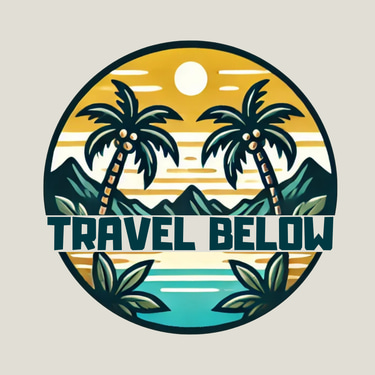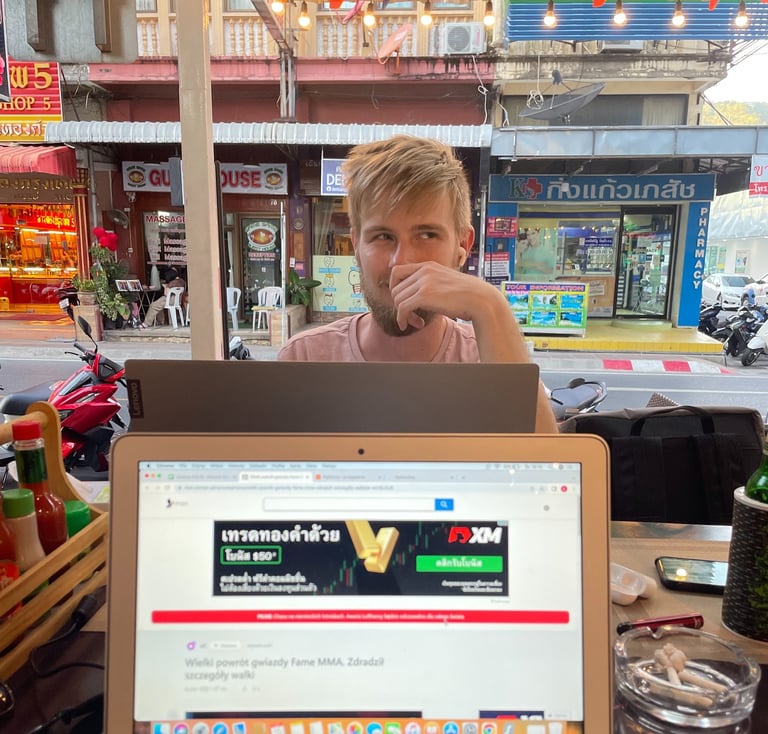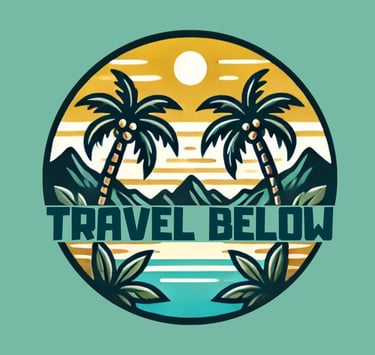
TRANSPORT IN THAILAND
How to get around Thailand?
Table of contents
Getting around long distances
How to get to the islands?
Transport in cities and on the islands
Car and scooter rental
I also invite you to read more about Thailand in general
You’ll find useful info about the country, visas, the best time to visit, SIM cards, and much more! I’ll be adding new content regularly, so feel free to stop by again soon :)
Transport in Thailand - how to get aroud?
When you come to Thailand for the first time, traffic might seem quite chaotic (at least until you visit Vietnam). Speeding tuk-tuks, scooters weaving between cars, and constant traffic jams in big cities - at first glance, it may look crazy, but getting around Thailand is actually easier than you think.
Getting around long distances
When planning a trip to Thailand, don’t forget about the distances between destinations - and remember that if a flight takes one hour, it doesn’t mean you’ll be there in one hour. Many times when travelers plan to visit several places in 14 days - often hundreds of kilometers apart - I always try to remind them of this. From Bangkok to the north, to Chiang Mai, it takes over 9 hours by car and even longer by bus, which makes several stops along the way. If you’re planning to travel by land from Bangkok to Krabi or Phuket, the trip will take many hours. That’s why for long distances, the best option is to fly.
Flying is by far the fastest and most comfortable way to travel in Thailand. The most popular airlines are AirAsia, Thai Lion Air, NokAir, and VietJet. Some routes - like direct flights from Bangkok to Koh Samui - are served only by Bangkok Airways, since the island’s airport is private, which makes these tickets significantly more expensive.
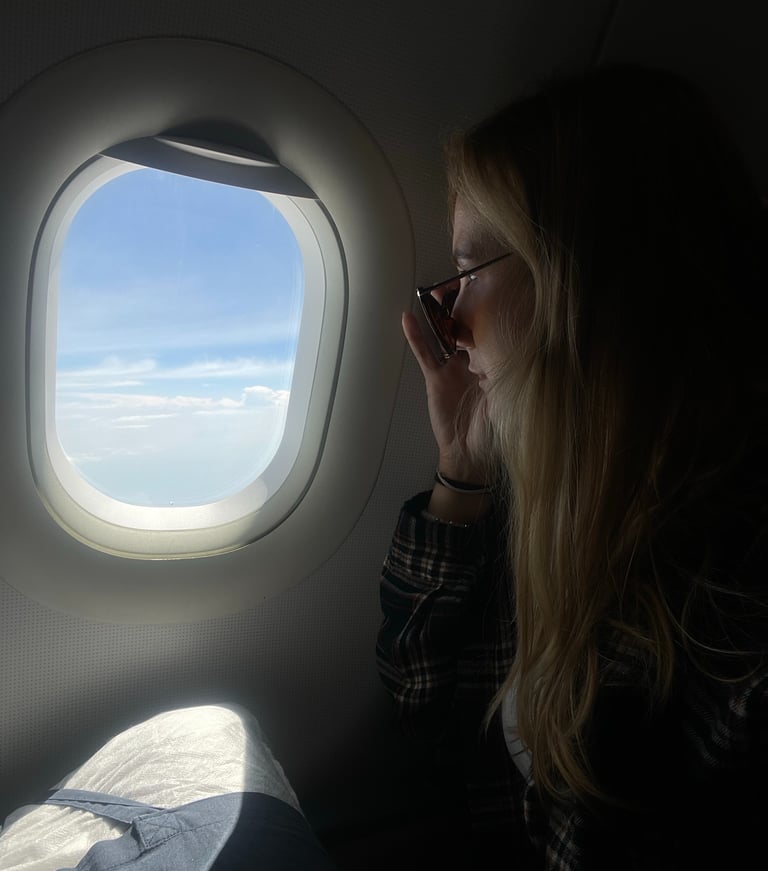

Domestic flights
Trains
Taking a train is a great option for those looking to save money. For longer routes, such as Bangkok–Chiang Mai, I recommend taking an overnight train and booking a sleeper berth. This way you can sleep through the journey, save money on accommodation, and avoid losing an entire day to travel.
You can reach the north of Thailand (Chiang Mai), Kanchanaburi, Pattaya, Hua Hin, Chumphon, and Surat Thani by train - and even travel internationally to Laos or Malaysia. Schedules and prices can be found here: railway.co.th
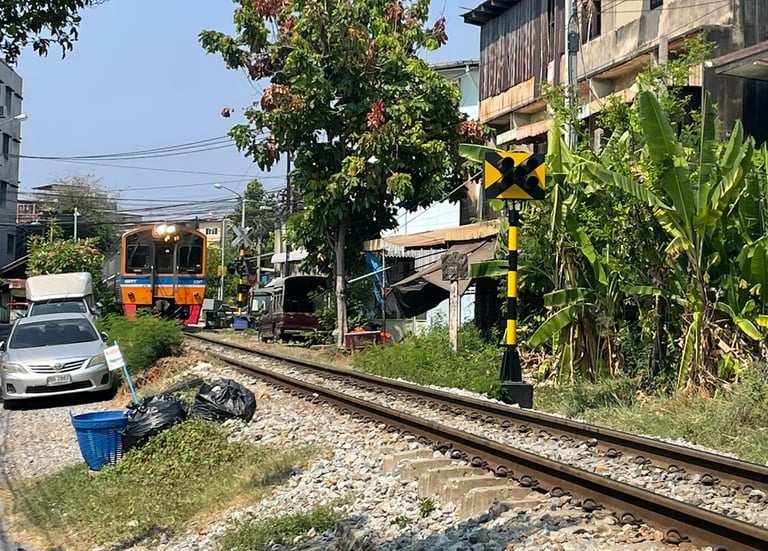

Buses and vans
An alternative to trains - which, for obvious reasons, don’t reach every destination - are buses. Night buses also operate on long routes, such as from Krabi or Phuket to Bangkok, or from Bangkok to Chiang Rai, though they’re less comfortable than trains and tend to leave you quite exhausted afterward. I recommend bus or van travel for shorter routes - up to 4–6 hours. Trips like Phuket–Krabi, Krabi–Koh Lanta, or Chiang Mai–Chiang Rai are perfectly fine
The best place to search for bus connections is 12go.asia. Below, you’ll find a search tool that lets you check routes from any point in Thailand.
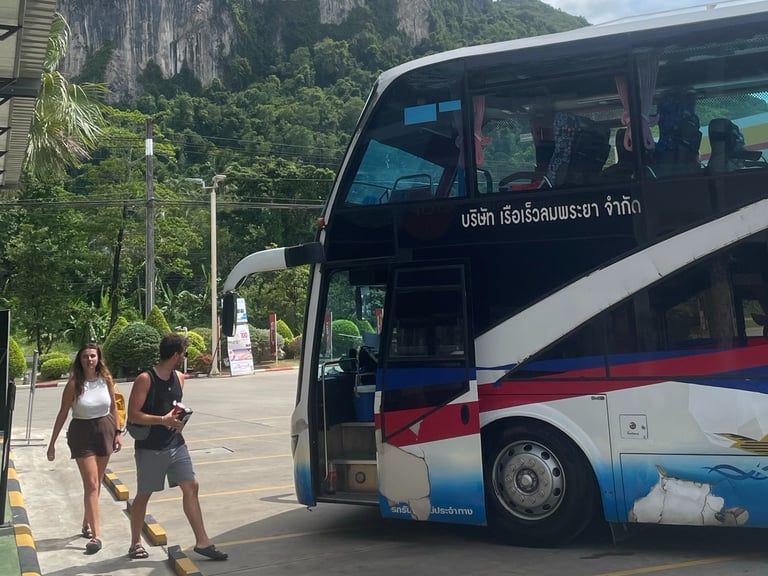

How to get to the islands?
It depends on which island you’re heading to, but generally it will be by sea. To reach smaller islands like Ko Poda or Koh Hong in Krabi, you’ll take a traditional long-tail boat – the wooden Thai boat with a long propeller shaft. For more distant islands such as Koh Phi Phi, Koh Lanta, Koh Lipe or Koh Phangan, it will be a ferry, catamaran or speedboat. Koh Samui can also be reached by air – there’s a small airport with frequent domestic flights.
Ferries are the slowest but most comfortable option, especially for those prone to seasickness. You barely feel any rocking or waves. If you’re heading to Koh Samui or Koh Phangan during the monsoon season, avoid speedboats or catamarans - the sea can get quite rough, and you’ll enjoy a calmer journey on a ferry. Once the waves reach even two meters, it gets unpleasant, and the crew starts handing out motion-sickness bags. The downside of ferries is that you have to carry your own luggage onboard. On larger ferries or speedboats, the crew usually handles that for you, and you can also buy drinks and snacks onboard.
It’s also good to know that bigger islands usually have proper piers, but smaller ones or those with strong tides sometimes don’t. You might have to step straight into the water when disembarking. Your luggage is usually carried by staff or transported by a tractor with a special trailer - just like on Railay.
If you’re traveling as a group, check if your hotel offers island transfers. It can sometimes be more affordable than booking a private boat. However, if you’re traveling as a pair, it’s usually not worth it.
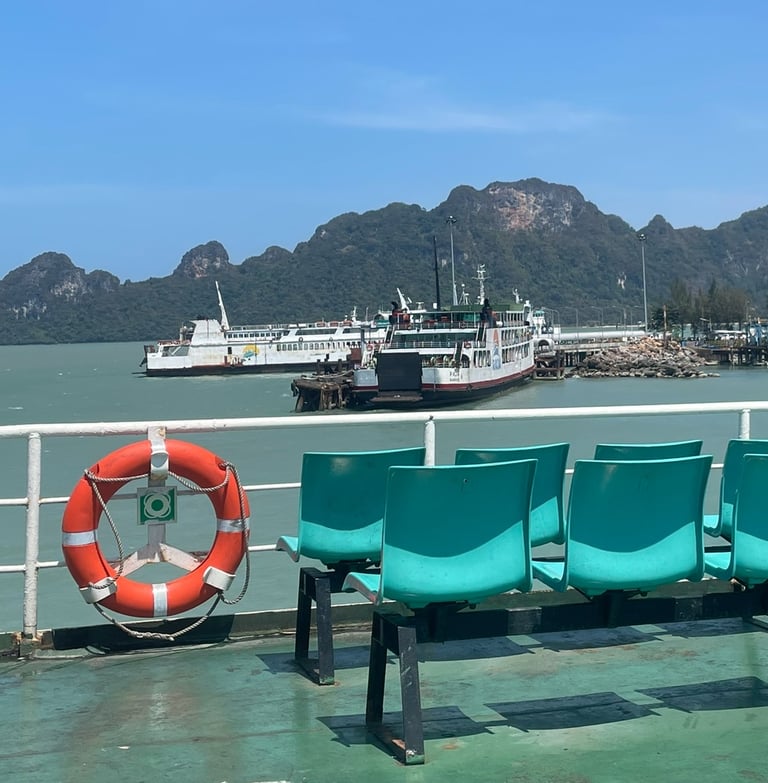

Another very convenient option is a combined bus + ferry ticket. This saves you time and hassle, as everything is organized in one go. For example, if you want to visit both Krabi and Koh Samui, you can simply book a bus + ferry option on 12go.asia. You’ll board a bus in Krabi, get dropped off at the port in Surat Thani, and be guided straight to your ferry or speedboat. It’s an easy and seamless way to travel between Thailand’s mainland and islands.
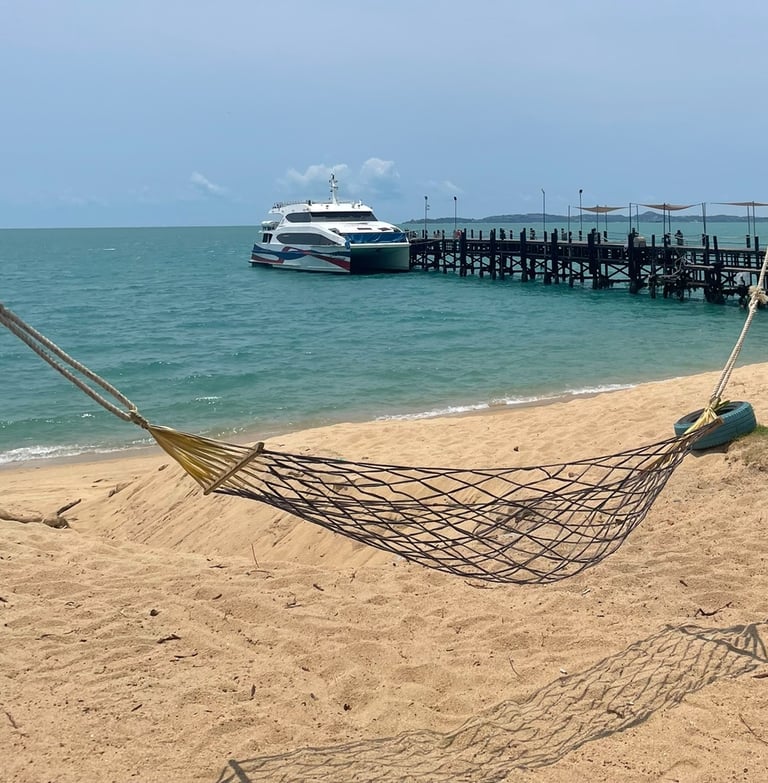

Bus + ferry transport
Transport in cities and on the islands
The fastest and most convenient way to get around Bangkok. From the airport, you can easily reach the city center using the Airport Rail Link (ARL), and then switch to the BTS train system to continue to your destination. While in Bangkok, the BTS Skytrain is the most popular choice as it covers key central areas: Sukhumvit, Silom, Sathorn, and Siam Square. There’s also the Bangkok Subway (MRT). I recommend using Google Maps - all lines and stations are clearly marked there.
Bangkok - metro and city trains
Taxis and Grab
You’ll find both traditional taxi companies and app-based services like Grab or Bolt. Grab is generally the best option, as it works reliably across most tourist destinations in Thailand.
If you’re heading from the airport to your hotel (outside Bangkok), I recommend taking Grab instead of a shared shuttle, as those often drop passengers off one by one, making the trip twice as long if your hotel is last. In Bangkok itself, the metro is the easiest way to get into the city.
On the islands, such as Phuket or Koh Samui, taxis are much more expensive, and in some places you might even hear about taxi or tuk-tuk “mafias.” This is especially visible in Krabi. For example, if you try to book a Grab from Ao Nang Beach, the driver might cancel or ask you to walk to a different pickup point - sometimes up to a kilometer away - because Grab drivers avoid conflict with local tuk-tuk groups.
In Bangkok, a popular alternative is a bike taxi – basically a motorbike you can book through the Grab app, just like a car. It’s a great way to avoid traffic and reach your destination quickly.
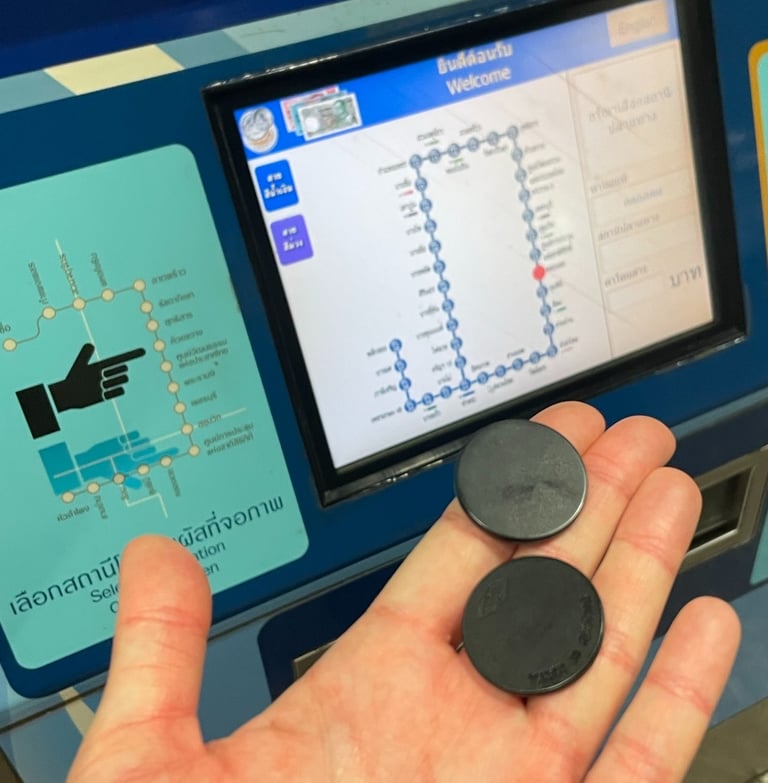

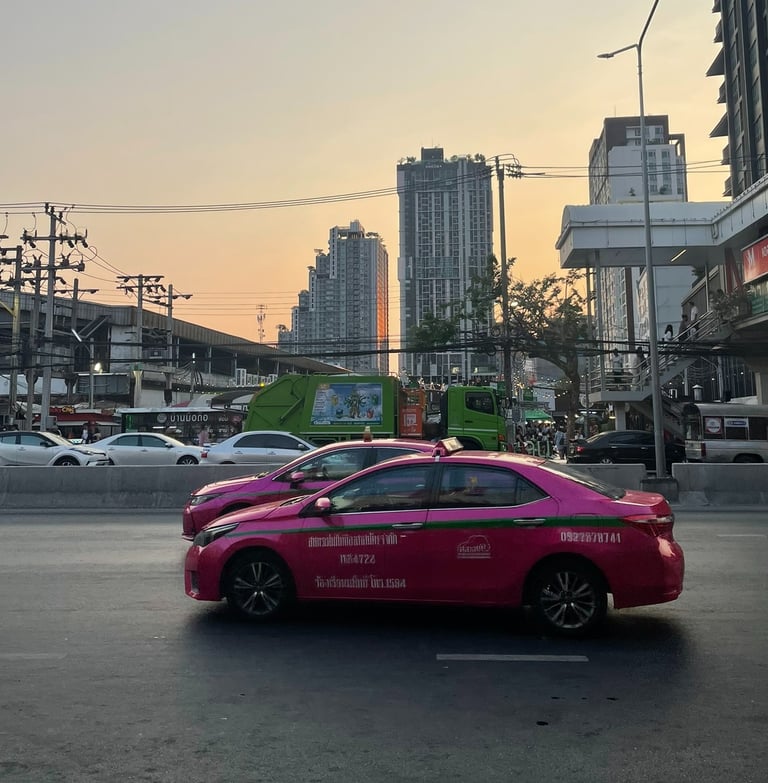

Tuk tuk
Tuk-tuks are mainly for tourists – locals rarely use them. They’re not cheap either: a short few-kilometer ride can cost around 300 THB. Still, it’s a fun experience and one you shouldn’t skip, especially in Bangkok.
Be cautious, though. If drivers offer you “cheap tours” or tell you an attraction is closed for the day – it’s usually not true. It’s a common scam to take tourists on overpriced detours where everyone along the way takes a cut. Don’t let the driver be your guide unless you’ve booked a proper tour online. Avoid random offers, especially around the Grand Palace or other tourist-heavy areas.
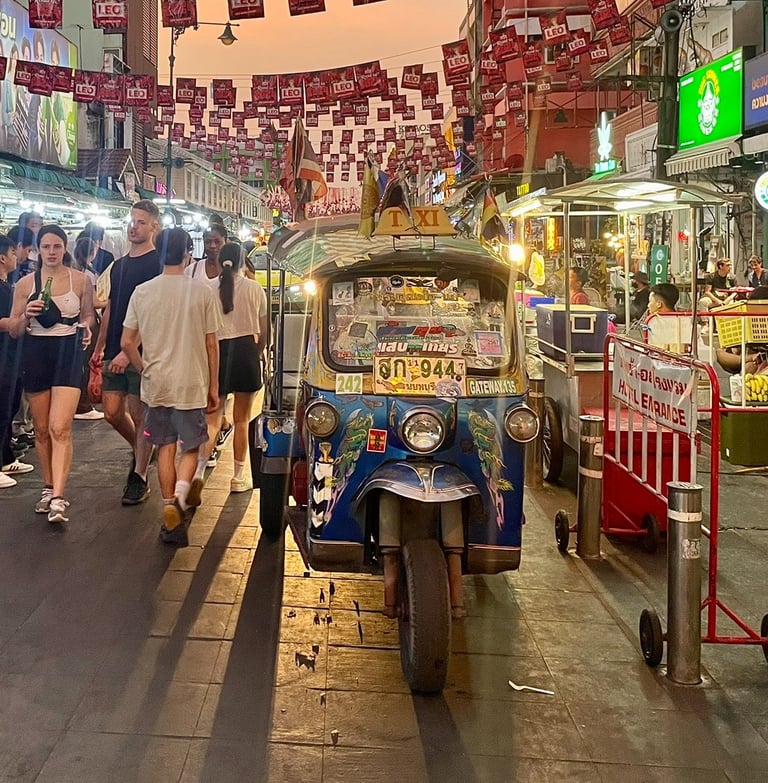

Songthaew
Songthaew literally means “two rows,” describing its setup – a pickup truck with two benches in the back that seats around eight people. This is one of the most common ways to get around in Thailand. You’ll see red, yellow, blue, green, and other colors, depending on the region.
In some cities, like Hua Hin or Pattaya, songthaews run on fixed routes like buses and are very cheap – usually 20 - 50 THB. On the islands, like Koh Samui where there’s little competition, short rides can cost anywhere from 100 to 400 THB.
They’re not fully public transport, but locals use them all the time. You can even hire one privately for the day to take you around various spots.
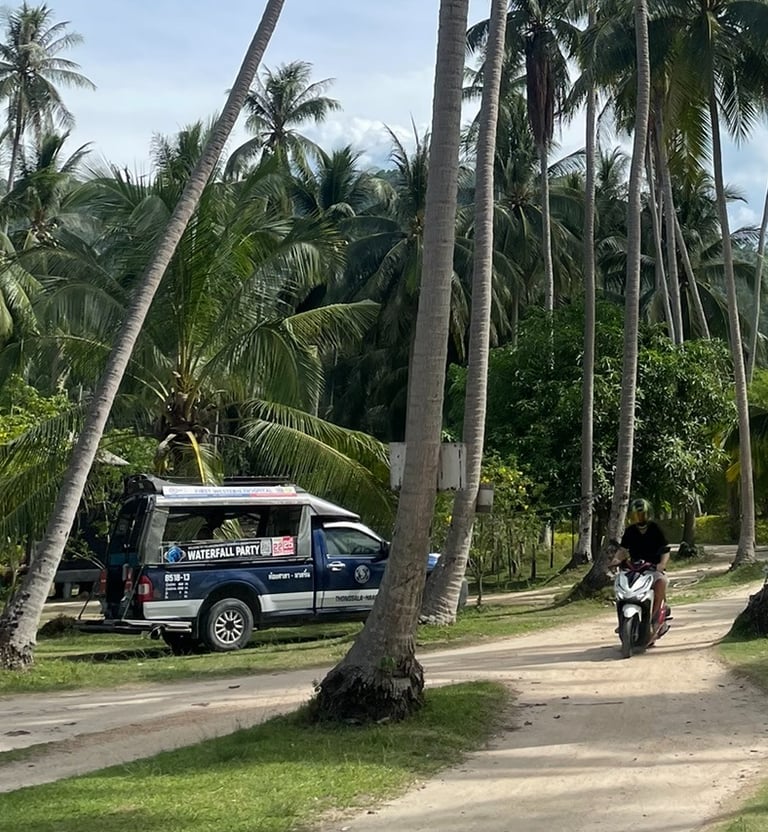

Motorbike Saleng
This is a motorbike with a side seat or carriage attached. We once managed to fit in one of these with all our luggage – and even rode four people together with friends, so they’re surprisingly spacious. The suspension, however, isn’t great, so it’s not ideal for longer or steep routes.
You’ll find these mostly in Krabi and on smaller islands like Koh Muk, used for short rides of a few kilometers. They’re cheaper than tuk-tuks – usually 100 to 200 THB per ride.
In everyday life, locals use these motorbikes to transport groceries, goods, or even whole families – they’re a big part of local life.

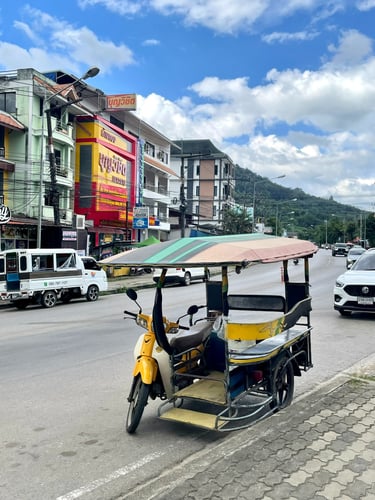
Car and scooter rental
enting cars and scooters in Thailand is very popular and often the most affordable way to get around, especially when it comes to scooters. Of course, you must have the proper driving license - either an international one or a Thai license. Remember that a category B car license does not allow you to ride a scooter in Thailand.
If you don’t have the proper license but decide to rent a scooter anyway - “because everyone does it” - keep in mind that while the police fine may be small, no insurance company will cover you in case of an accident or damage.
Before renting a vehicle in Thailand:
make sure you have the correct license
check recent reviews of the rental company (4.6–5.0 rating on Google is ideal)
take photos or a short video of the vehicle before your first ride, check its condition, brakes, lights, and how to open the fuel cap
you’ll usually be asked for a deposit or to leave your passport — always try to leave money or a photocopy instead
Helmet: always wear one - try on a few before choosing; it should fit snugly but not be uncomfortable
Car rental with a driver
Hiring a car with a driver is a very popular and convenient option. You can rent a car, a minivan for 8–10 people, or a larger van for 13 or more passengers. If you’re traveling in a group, value comfort and flexibility, or are short on time and don’t want to miss anything, this is one of the best ways to explore. It’s available almost everywhere in Thailand - Bangkok, Chiang Mai, Krabi, Phuket, and Koh Samui included.
Below you’ll find links to recommended options in different regions.
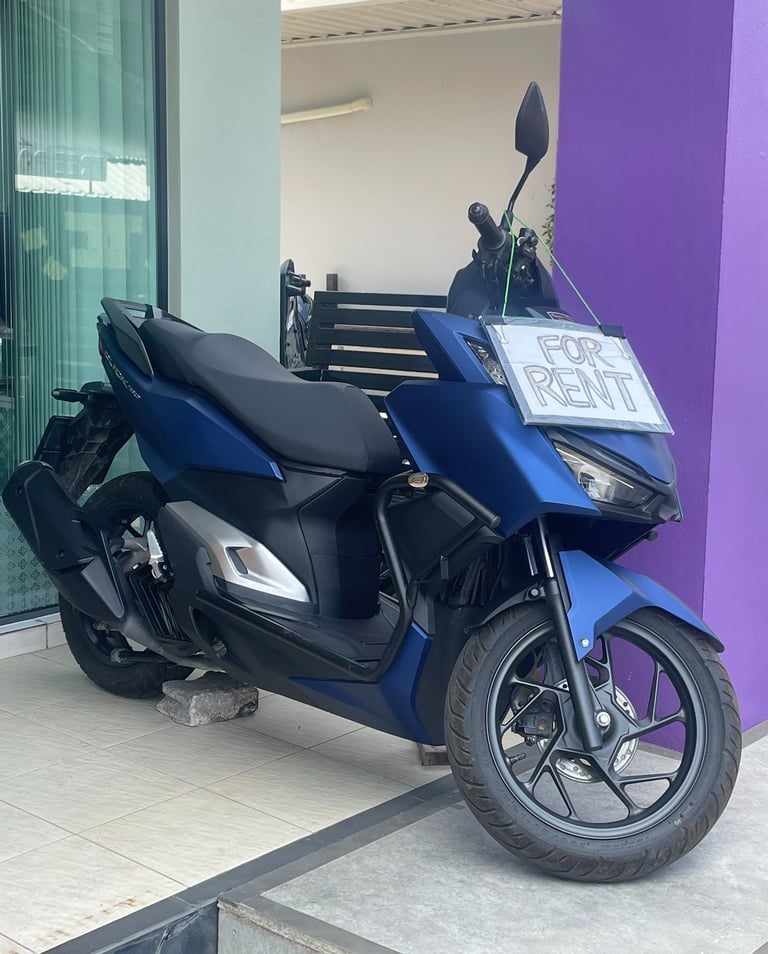

If you find our content helpful, you can say thanks with a small coffee - or simply share it on your social media.
We’d also love it if you followed us on Instagram and Facebook. We do our best to share the most up-to-date stories and insights - not just from Thailand, but from other countries we visit too.
And if you need help planning your own trip to Thailand, just drop us a message - we’ll be happy to help! 😊
Need help planning your vacation?
Heading to Thailand? Need someone to plan your holiday, or just a few tips and a chat?
We’re here for you.
Drop as a line
Do you have questions about traveling to Asia? Suggestions for the blog? Want to collaborate? Need help or just want to meet for coffee?
Feel free to get in touch.
